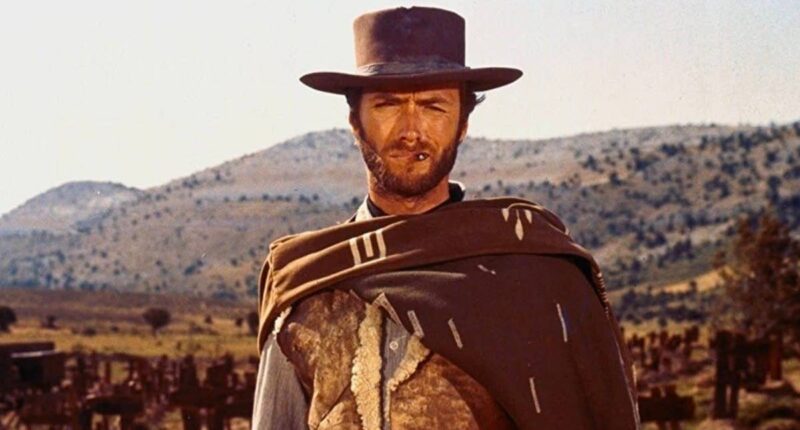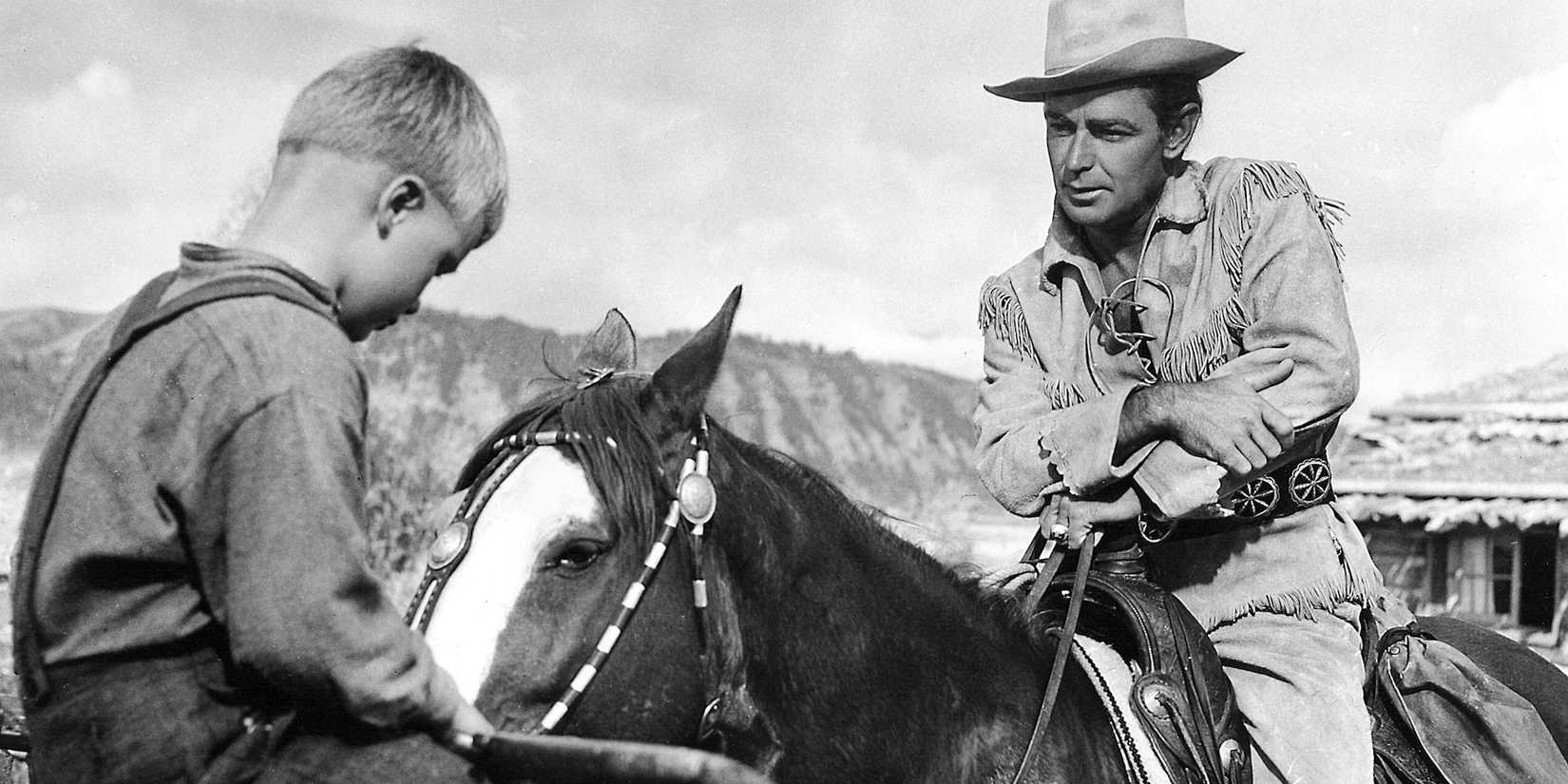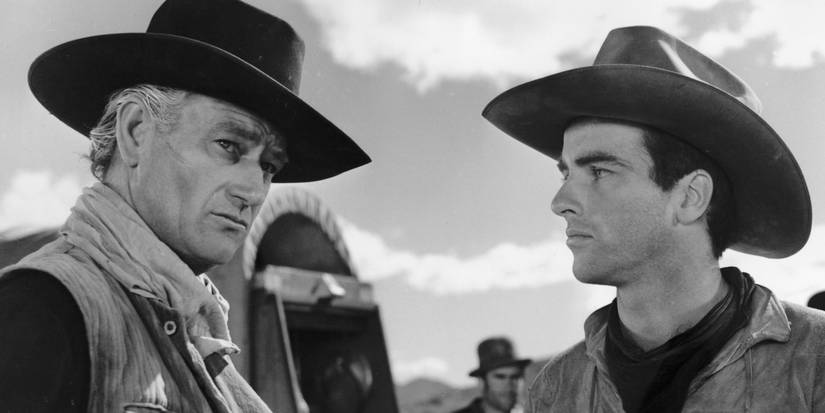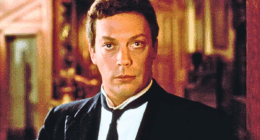I love Westerns, especially spaghetti Westerns. There is just something epic and grand about these films that bring a certain amount of bravado and action that American Westerns sometimes lack. One of the best examples of this is 1966’s The Good, the Bad and the Ugly, directed by Sergio Leone and widely considered one of the most influential Westerns of all-time.
The Good, the Bad and the Ugly is the third film in the “Dollars Trilogy,” and revolves around three men who are racing to find Confederate gold during the chaos of the Civil War. The unique cinematography, stylized, and dramatic gunfights made this movie a must-watch for any fan of the Western genre, and once you’re done, you’ll definitely be craving more gunslingin’ action in the Old West. Thankfully, you’re in the right place, as these equally influential Westerns are just as good as The Good, the Bad and the Ugly.
‘Shane’ (1953)
Before the Dollars Trilogy was even conceived, Westerns were beginning to transform the movie landscape. One of the best pre-Dollars Westerns was Shane, directed by George Stevens, which took an Old West approach to the battle between the haves and have-nots.
Starring Alan Ladd, Shane tells the story of the titular character, a drifter with a gift for shooting, as he wonders in between a brewing conflict between wealthy ranchers and the poor homesteaders. The performances of Ladd and Jean Arthur are simply spectacular, and you can’t get enough of Shane‘s awe-inspiring cinematography, which brought the landscape of the Western to splendid life.
‘Red River’ (1948)
If I was alive during the 1940s, I would have paid a nickel to go see Red River in the theater with no questions asked. While not as stylized and action-heavy as Leone’s Dollars trilogy, the Howard Hawks-directed Western is no less entertaining, and you’ll be hooked on the film’s story just like I was when I watched it for the first time.
Starring the legendary John Wayne, Red River tells the story of the first cattle drive along the historic Chisholm Trail in a first person point-of-view. That first drive, though fictional, was wrought with tension between the creator of the drive, Thomas Dunson (Wayne), and his adoptive son, Matthew “Matt” Garth (Montgomery Clift). Watching these two go back-and-forth over the cattle drive gives Red River a personality touch that could otherwise be missing from older Westerns.
‘Hell or High Water’ (2016)
I’m going to be real with you: most modern Westerns don’t hold a candle to the movies of old. WIth more Westerns gearing toward the more stylized spaghetti genre that made Leone’s Dollars Trilogy such an iconic success, most leave out a crucial element to what made those movies great, an interesting storyline. That doesn’t apply to 2016’s Hell or High Water, which was written by Taylor Sheridan and directed by David Mackenzie, which showed others just how the modern Western is supposed to be done.
Hell or High Water is a neo-Western that taps into the classic tropes to make a truly unforgettable film. The movie follows two brothers (Chris Pine and Ben Foster) who rob banks to try and save their family ranch. All the while, the legendary Texas Rangers (played by Jeff Bridges and Gil Birmingham) are on their tail, trying to catch the brothers and throw them in the slammer. You simply gotta love a great Texas Western, and the story and acting in Hell or High Water is worthy of a chef’s kiss.
‘High Noon’ (1952)
You have to love a good Western that stirred up a lot of controversy during its initial run. That was what befell on High Noon, the 1952 film starring Gary Cooper and Grace Kelly that told the story of a town marshal who has an impossible choice to make: fight off a gang of killers or make a break for it with his wife.
While, on the outside, it dissolved the partnership between Carl Foreman and Stanley Kramer due in part to Foreman being a former member of the Communist party, it didn’t affect the film directly. High Noon, today, is widely regarded as one of the best Westerns of all-time, thanks to the standout performances of Cooper and Kelly, and an intriguing storyline that asked whether you would fight or run.
‘Unforgiven’ (1992)
While the Western genre took a dip in quality in the late ’70s and ’80s, the genre got a much-needed jolt of life in the early ’90s thanks to Clint Eastwood, the “Man with No Name” that played a huge role in making Leone’s Dollar Trilogy the legend it is. In 1992, he stepped into the director’s chair with Unforgiven, which he also starred in with some of the legends of the big screen: Gene Hackman, Morgan Freeman, and Richard Harris.
Unforgiven tells the story of an outlaw who’s aging, but takes on one more job before the sand in the hourglass runs out. Unforgiven is one of the finest revisionist Westerns ever made, with not only the performances a standout, but the cinematography was simply stunning. It’s no wonder the Western was such a huge hit, and it revitalized the genre.
‘Pale Rider’ (1985)
While the ’80s was a down period for the Western genre, there were some movies that stood out and deserve to be appreciated for their brilliance. One of those movies was Pale Rider, the 1985 film produced and directed by Clint Eastwood that is an underrated masterpiece.
Pale Rider is actually a reference to the Four Horsemen of the Apocalypse, with Eastwood starring in the lead role of The Preacher, who not only preaches the Good Word, but also is a great gunslinger who protects gold miners from all sorts of villainous characters. With Eastwood portraying the “Pale Rider” of death, the Western could have very well been a parody of the classic Western tale. Thankfully, Eastwood had the foresight and experience to make a movie that was an ode to those Westerns of old, while bringing new ideas to the table to make for one heck of a Western everyone should check out.
‘Westworld’ (1973)
Science fiction can fit in so neatly within other genres, and Westerns are no exception. One of the best examples of a classic sci-fi Western is Westworld, directed by Michael Crichton. This movie could serve as a cautionary tale of our increasing reliance on artificial intelligence and how, if something goes wrong, it could be lights out for all of us.
The movie depicts visitors to a futuristic theme park that contains androids that act like humans. However, once they begin to malfunction, all hell breaks loose. It’s a chilling sci-fi Western that gave birth to the neo-Western, a subgenre that places the genre in a more modern setting. Think of Westworld as a film that puts The Good, the Bad and the Ugly in a modern, theme park setting, and you have a movie that’s both thrilling and entertaining.
‘Tombstone’ (1993)
As I mentioned earlier, the early ’90s gave rise to a renaissance of the Western, first with 1992’s Unforgiven, and then 1993’s Tombstone. The George P. Cosmatos film was much more of a traditional Western that had a lot of star power, plus a fantastic story that had a great climatic ending.
Tombstone is (loosely) based on the events that occurred in Arizona in the 1880s, from the Earp Vendetta ride to the iconic gunfight at the O.K. Corral. Tombstone was cast with the biggest stars of the day, from Kurt Russell to the late Val Kilmer, and the performances were simply iconic. In a lot of ways, Tombstone was a great ode to the Old West, and no Western fan should leave this masterpiece off of their viewing watchlist.
‘3:10 to Yuma’ (1957)
You thought I would go a list without outlining a scenario? Well, buckle up, dear reader. You’re down on your luck, and you need to make some money to save your little ranch. So, you take a job escorting one of the most notorious outlaws to justice. Would you take it?
Well, Dan Evans (Van Heflin) took on that job in the iconic 3:10 to Yuma, which is considered one of the best Westerns ever made, even being admitted into the National Film Registry in 2012. It’s a movie that could be seen as inspiration for the Dollars trilogy that was to come, a Western that was action-packed and tingling with tension at every corner. If you’re a Western fan and have yet to watch 3:10 to Yuma, what exactly are you waiting for?
‘For a Few Dollars More’ (1965)
Yes, The Good, the Bad and the Ugly is the best movie in the Dollars Trilogy, but the film that set it up, For a Few Dollars More, is just as influential and legendary. For starters, it expanded on the story of “The Man with No Name” (Clint Eastwood) and introduced us to Colonel Douglas Mortimer (Lee Van Cleef), who was actually one of the good guys here. Second, it established the spaghetti Western tropes, from its sweeping landscapes, tantalizing up-close visuals, and highly stylized gunfights filled with tension.
One aspect that few discuss when it comes to discussing the Dollars Trilogy is the score by Ennio Morricone, which elevates each scene to the point of epicness. While his score would be most remembered in The Good, the Bad and the Ugly, it had its roots here, with “El Indio’s Theme” being an all-time classic, which you can definitely say the same for For a Few Dollars More.








.jpg?q=49&fit=crop&w=825&dpr=2)








